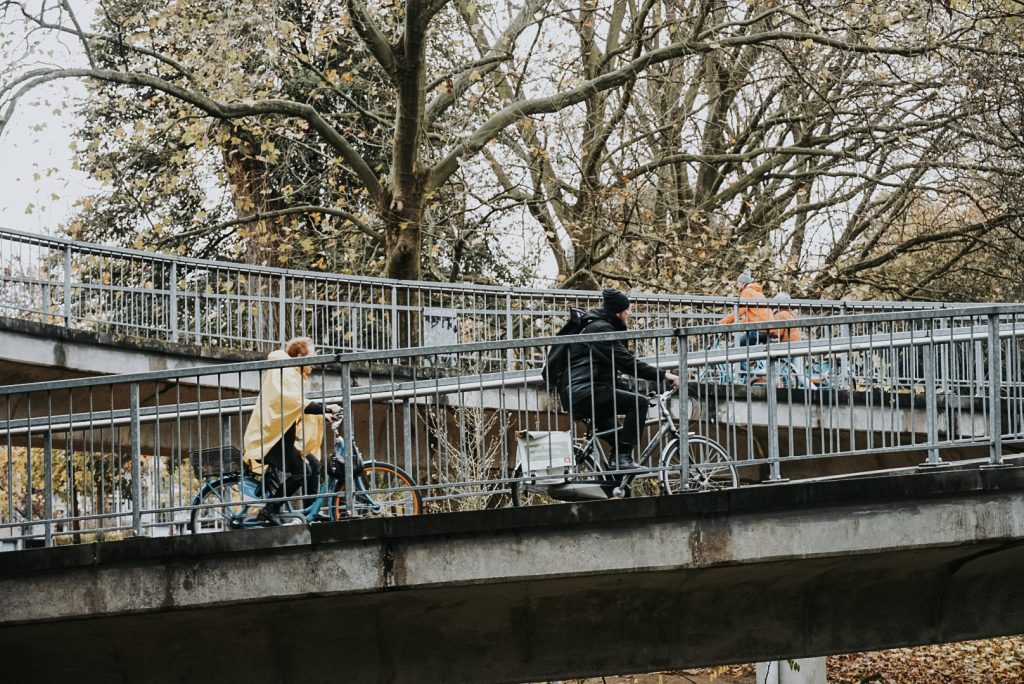Is the EU Ready to Pedal Towards a Zero Emissions Future?
Breaking new ground, the European Commission recognizes cycling’s pivotal role in shaping a cleaner, healthier future.
The European Commission (EC) broke the glass ceiling with its “European Declaration on Cycling”. On 4 October 2023, the EU executive body recognized travel by bike as a stand-alone and fully-fledged mode of transport, in a move bound to reshape mobility in cities and beyond.
In a historic first, the EC provided rules and guidance to increase cycling uptake, encouraging tapping into this mode of transport to pursue the transition to emission-free mobility. The text “recognizes cycling as one of the most sustainable, accessible and inclusive, low-cost and healthy forms of transport and recreation, and its key importance for European society and the economy.”
With cyclists producing 84% less carbon emissions than car drivers, the European Declaration on Cycling is a much-awaited development to make the urban environment less polluted, and more liveable, and ramp up existing efforts.
[Cycling is] one of the most sustainable, accessible, and inclusive, low-cost, and healthy forms of transport and recreation.
The Declaration will now serve as a basis for inter-institutional discussions ahead of the adoption of a final version by the EC, the European Parliament, and the Council of the European Union. With the definitive document expected next year, now is the time for EU legislators to take bold steps and negotiate a text that boldly matches EU environmental ambitions.
A success born in cities
For decades, municipalities have been at the forefront of the cycling revolution, taking action to foster cycling uptake and acquiring long-standing experience in this field.

In Paris, since 2018, annual cycling traffic surged by 166%, a record development propped up by 1,000 kilometres of bike lanes and ad hoc local funding.
In Copenhagen, one of the first municipalities to spearhead a cycling revolution in Europe, cargo bikes increased from 20,000 in 2020 to more than 40,000 in 2023. Residents of the Danish capital have eagerly embraced the opportunity to lower their carbon footprint: parents hop on cargo bikes to transport their children, delivery companies employ them to move food and parcels around town, and a growing number of construction companies are using cargo bikes to transport tools and materials.
In Paris, annual cycling traffic surged by 166%.
In Brussels, the 2022 Good Move scheme to overhaul traffic in the inner city contributed to a record 36% increase in the number of cyclists in just two years. From Gdansk to Lyon, from Ljubljana to Madrid, more and more urban dwellers are swapping their cars for their bikes, powering a seismic shift in sustainable transport.
Over the past three years, an unlikely ally helped boosting cycling’s success across Europe: Covid-19. Safe distancing needs during the pandemic encouraged citizens to re-evaluate their approach to this old yet new form of transport. Since then, many have not gone back to their cars.
The way forward
However, a lot more is needed to cement this progress. In the EU-27, only 7.4% of the total number of trips are made by bike on average, data from the EU’s Joint Research Centre shows. Only a decisive, wide-ranging EU initiative will allow to increase cycling share and buttress cities’ efforts. At the local level, an ambitious EU cycling framework will help urban leaders continue their sustainable journey, furthering biking growth and uptake in their territory.
This summer, in anticipation of the EC’s Declaration, a working group of Eurocities’ members decided to leverage their experience to inform the EU institutions’ final work on cycling. On 12 September 2023, the Eurocities group formulated the “Pedal-powered progress – Towards an EU cycling policy” policy paper containing a series of recommendations to the EU. The advice was also shaped by the results of a Eurocities Pulse survey on urban cycling that was conceived to understand local leaders’ challenges and expectations for the future.

In these, local leaders urged EU legislators to adopt a multifaceted approach to fully exploit cycling’s positive impact on people’s health, the environment, and the economy.
Among other suggestions, we recommend the EU support the development of a safe and high-quality bike infrastructure to prompt bicycle use. EU guidelines should set minimum quality levels for infrastructure while offering a certain degree of flexibility to adapt to the local context. Funding options at various governmental levels should be made available and, as emphasized by the Pulse cycling survey, a strong political will at the local level will be necessary to support a strong roll-out of local bike infrastructure.
Promoting a new cycling culture in Europe will also mean treating cyclists as a priority. Today, a lack of road safety is what stops many people from even considering hopping on a bike. Municipalities’ empirical experience also shows that cycling uptake is higher when cyclists feel protected, as when they can ride on cycling lanes running separately from car traffic. However, national traffic laws in many EU countries currently hinder cycling, so Eurocities advises the EU to update national traffic rules and encourage cooperation between local and national authorities.
In Brussels, the 2022 Good Move scheme to overhaul traffic in the inner city contributed to a record 36% increase in the number of cyclists in just two years.
This soul-searching process should include a reflection on the adequacy of national traffic rules for cycling and the adoption of a 30km/h speed limit in urban areas.
In this holistic approach, on-the-ground efforts will need to be matched by a cultural shift to increase cycling popularity across the continent. The EU should envision raising awareness about the benefits of cycling for all population groups and urge Member States to promote a cycling culture in their territory.
Cycling will need to become widely accessible to people, regardless of age, gender, ethnicity, or location – special attention should be directed to underserved population groups that cannot afford to buy a bike or whose disability prevents them from using a standard two-wheeler.
The “Pedal-powered progress – Towards an EU cycling policy” policy paper also calls on the EU to help develop standardized tools for collecting cycling data, the lack of which is currently preventing many cities from making informed decisions. Urban mobility practitioners need to get a clear picture of all the dynamics at play in their territory, such as the number of bike trips, the purposes of the trip, and the type of vehicles, to address perceived barriers to cycling.

The Declaration’s final version should also encourage the creation of common data standards and prompt private mobility operators – such as e-scooter and bike-sharing companies – to make their data available to cities for planning purposes.
As part of their recommendations, Eurocities’ experts also exhort the EU to consider cycling a factor of sustainable economic growth that can create a flourishing European bike industry. The shortage of bikes and related services that many cities witnessed during the Covid-19 pandemic should no longer stand in the way of cycling’s expansion. To reverse that trend, the creation of a strong EU cycling industry would bring positive repercussions on the local economy, including the creation of new jobs.
A strong political will at the local level will be necessary to support a strong roll-out of local bike infrastructure.
The policy paper additionally advises the EU to harness the power of increasing connections between cities and surrounding suburban and rural areas. In this system, cycling, public transport, and shared vehicles would work seamlessly together and complement each other. For example, travelers could reach a city’s train station by bike, reach the countryside by de by train, and then rent a shared bike to reach their final destination.
Shaping the final Cycling Declaration
Some of these advices were already considered in the EC’s Declaration. The EU executive body laid out an ambitious proposal on data collection: creating an EU-wide database to gauge progress on cycling infrastructure, as well as keeping track and measuring cycling-related injuries. The EC also recognized that more investment in cycling is needed to fully unleash the potential of cycling in Europe.
However, the text should aim at doubling the number of cycled kilometers in the EU. The EC also fails to set specific targets and key performance indicators (KPIs) to assess the long-term impact of the Declaration, as it has for electric cars or rail freight in previous EU strategies.
Co-legislators should also consider that monitoring the Declaration’s implementation progress will be essential to keep the momentum. Failure to do that would considerably weaken the Declaration and inevitably relegate it to the next EC’s dusty shelves. The EU should appoint a coordinator for active mobility to coordinate the Declaration’s implementation.
Local leaders are eager to seize on this unprecedented opportunity to foster cycling’s expansion and revolutionize the way people move around. Is the EU as determined to take decisive steps and be the standard-bearer of a new sustainable mobility culture, with cycling at its core?